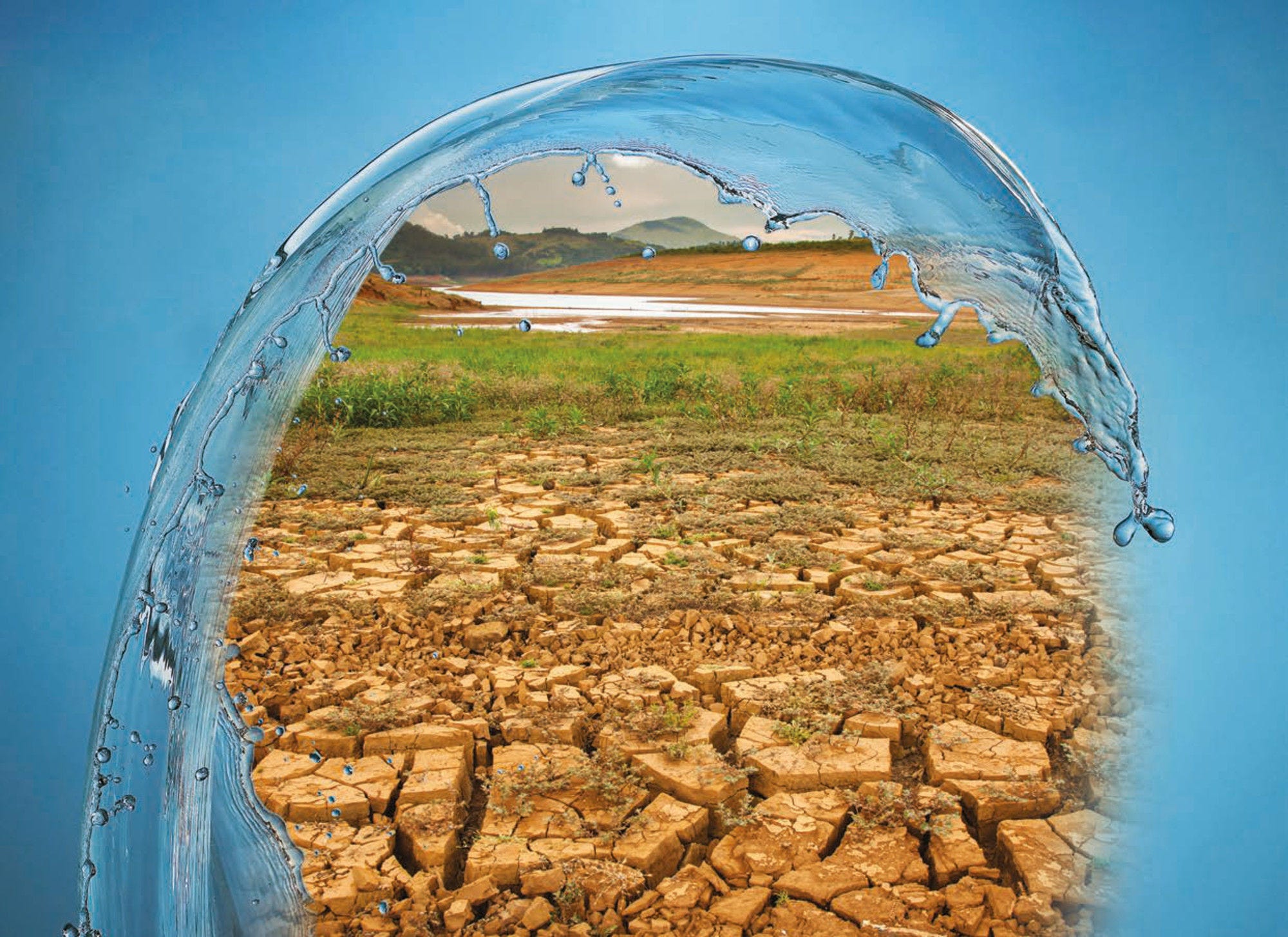More than 20 years after its implementation, the European Union (EU) Water Framework Directive (WFD) operates in a new context, mainly characterised by new cost drivers, namely unforeseen increases in the prices of the energy inputs, as well as increasing water scarcity coupled with the increased stringency in regulation stemming from the higher environmental ambitions in the green transition.
The current economic turbulence and acceleration of the green transition exacerbate issues related to the depreciation of existing assets over time, and the capacity to build up a reserve to finance the replacement investments. Energy costs increases can undermine the earning capacity of operators of existing services and thus their capacity to self-finance and attract external private financing for new investments, when the tariff regulation and policies do not allow to pass on these additional operating costs. The same applies for the additional capital costs coming from the investments prompted by the policy ambitions enshrined in the Zero Pollution Action Plan and, more generally, the Green Deal environmental and climate policies.
In such a context, effective implementation of the WFD and the achievement of its ambitions require that due consideration be given to its economic pillar, designed to support a cost-effective implementation for member states and communities. Core features of the economic pillar of the Water Framework Directive include:
Recovery of the financial, as well as the (non-financial) environmental and resource costs of water services. These costs include the opportunity cost of using water (which should reflect scarcity), the costs of pollution and environmental pressures (in line with the Polluter Pays Principle), and the financial costs of operating infrastructure and services to access water;
Water prices that promote water use efficiency and hence discourage wastage and encourage an efficient allocation of water resources;
An adequate contribution of water uses (use sectors) to the recovery of the costs of water services, in the context of growing cost pressures;
Economic analyses and appropriate data to document costs of measures and investments, their allocation, based on the contribution of different water users (households, industry and agriculture) to cost recovery.
The Fitness Check of the EU's water legislation and the assessment of the second cycle of implementation of river basin management plans (RBMPs) and flood risk management plans (FRMPs) indicate that there is considerable room for improvement with regard to the integration of water economics into the framework of integrated water management.
A series of thematic workshops co-convened by the European Commission and the OECD shed some light on some of the challenges EU member states face in relation to the economic pillar of the Water Framework Directive, and options to overcome them. Progress in this direction can accelerate the implementation of the WFD and thus contribute to the achievement of its environmental objectives in a cost-effective and fair manner. It can support better planning and investment decisions, to make the best of available resources and capacities.
The workshops aimed to establish a series of actions that the member states and the European Commission may wish to consider to accelerate the implementation of the WFD, building on a robust economics-based approach.
Cost recovery is a distinctive and foundational feature of the WFD. A high level of (financial) cost recovery reduces the claim on public financial support and promotes access to private finance sources. In addition, pricing can be a signal to incentivise water use efficiency, but with the important qualification that it needs to be embedded in a comprehensive and balanced policy package. The pricing instrument needs to take account of the different levels of price elasticity of water for different uses, which is very low for water use reflecting basic needs. Therefore, pricing instruments need to be accompanied by measures to address affordability. The workshop participants insisted that affordability needs to be thoroughly assessed; and that it is best addressed through targeted social measures than through complex – often regressive – tariff structures.
Polluter Pays principle is at the core of the WFD. Member states face similar challenges with its implementation, in particular as regards the identification of the polluter and its contribution to the pollution into - or the environmental pressure on - the water body in question. These challenges relate to data, methods and scale analysis; they also reflect the difficulties to measure and monetise the benefits of a particular project. These challenges lead to an uneven playing field. Countries would benefit from additional data, guidance and conceptual clarification.
Water scarcity is hardly new in Europe but has recently emerged as a pan-European challenge. This has revived attention to water allocation regimes, which are often inherited from times of plenty and thus in need of reform. Existing guidance on environmental flows needs to be more thoroughly implemented; clear definitions and stringent enforcement can help. Water allocation regimes are expected to deliver better results in combination with water scarcity pricing and the spare capacity from alternative sources to be used during peak scarcity. The workshops highlighted the complex dynamics of water use efficiency: when rebound effects are not factored in and specified in water allocation regimes, measures to enhance water use efficiency may not lead to water savings and hence not benefit water resources and the communities downstream.
In a context characterised by mounting uncertainties about water availability and use as well as the exposure and vulnerability to water risks, investment decisions would benefit from better planning. In particular, member states would benefit from more guidance on scenario analyses, in particular in relation to climate change and associated crises. Planning could also be improved by supplementing project level analysis with those at the level of strategic investment pathways.
When it comes to finance for measures and water-related investment, new sources of finance could be attracted through fair risk-sharing arrangements. Workshop participants agreed they could revive past discussions on a series of measures that can harness new sources of finance. They mentioned:
Depreciation methods that can be designed to serve policy objectives while adequately contributing to the desired rate of cost recovery for water services (with more or less stringent pressure on capacities to generate cashflows). The issue has become even more relevant in the context marked by high inflation rates;
Land-value capture, as a financing instrument that can translate some of the value added by achieving good water status into a revenue stream, thereby triggering the possibility to finance programmes of measures or water-related investment;
Extended producer’s responsibility, as a new frontier of making polluters pay and stimulating green innovation, for instance in relation to contaminants of emerging concern.
Most of the actions suggested for discussion have a strong cross-sectoral dimension, reflecting the message that further implementation of the WFD – including its economic pillar - requires collaboration across sectors, specifically those that affect water availability and demand as well as exposure and vulnerability to water risks (sanitation, agriculture, land use and urban development, fluvial transportation, energy generation have been discussed during the thematic workshops).
The pervasive under-valuation of the resource and benefits associated with investment in water by both public and private actors constrains financing opportunities. One pending issue relates to the assumption of its unlimited supply by many economic sectors. The proper valuation of water is a precondition for the planning of measures and investments and their prioritisation, as well as monetisation as a basis for designing pricing instruments and adequate contributions from water user groups. The latter is also a requirement for developing much needed innovative financing instruments.
Another pending issue is the appropriate geographical scale to design and implement programmes of measures. The WFD takes the river basin district as the geographical basis for the programming. However, it appears that measures, which are beneficial at a particular scale, may not be optimal at another scale. Moreover, the outcome of cost-benefit analysis of a measure may vary according to the geographical scale of the analysis. It is not clear how to reconcile actions across geographical scales: mainstream tools for economic analysis, such as cost-benefit analysis, are not adequate to address this issue.
The new context outlined above calls for a reconsideration of price, investment and depreciation arrangements. It may also involve defining a different level of the recovery of the costs of water services (as allowed by article 9(1)). In addition, workshop participants made pertinent observations that the application of the Polluter Pays Principle in the cost recovery efforts seems in practice geared towards compensation for incurred pollution costs, rather than the avoidance of polluting activities.
In the new context, the need for increasingly stringent – and potentially costly – environmental policies (such as the WFD) shows the importance of cost-recovery arrangements while posing pertinent questions on the current cost-recovery arrangements, namely to a large extent relying on recuperating costs through – limited – water bills and charges. Preliminary discussions on land-value capture and extended producer responsibility indicate a promising potential to widen the basis of cost recovery that also provide adequate incentives and deliver a more just and equitable distribution of the costs.











